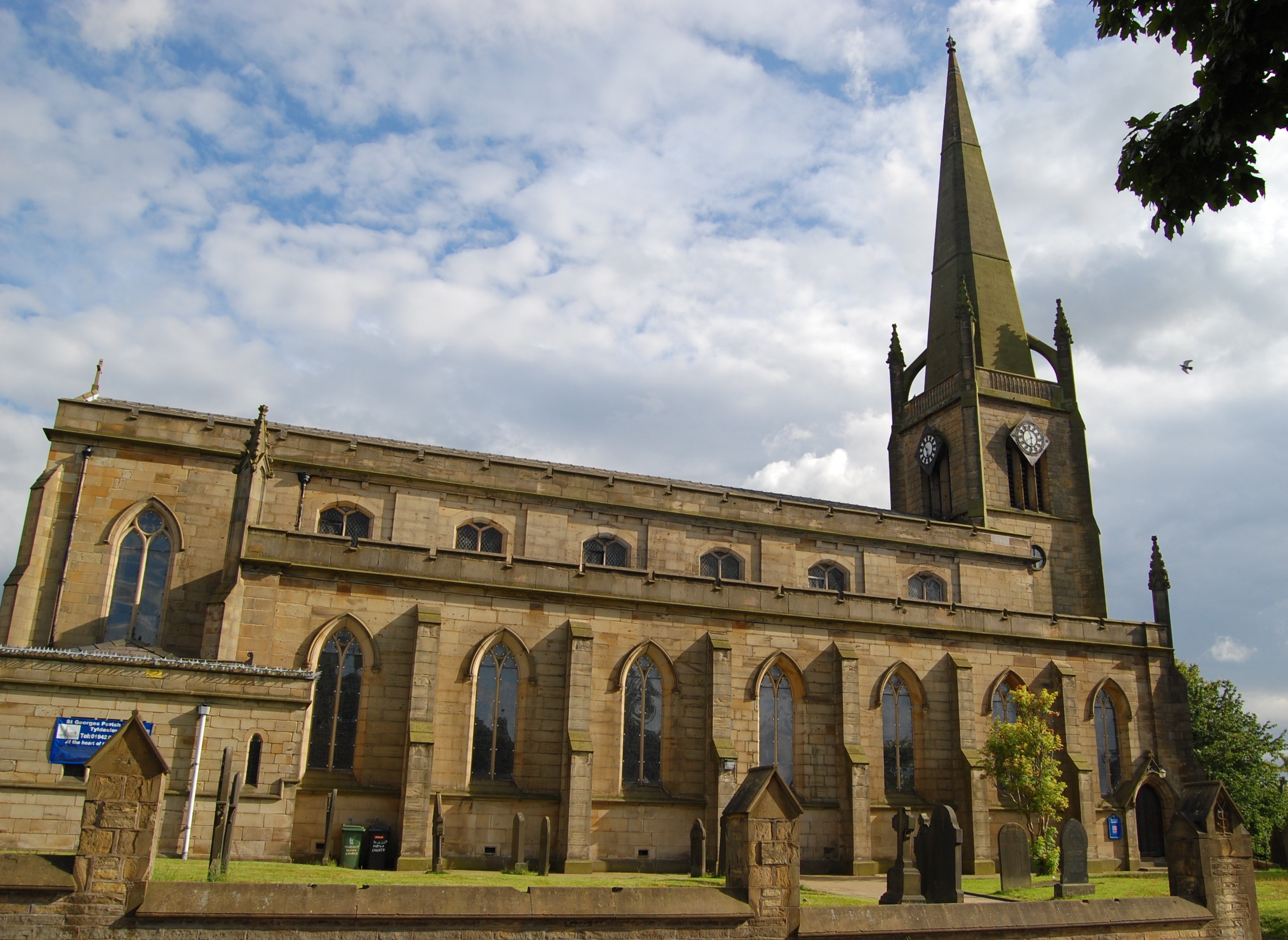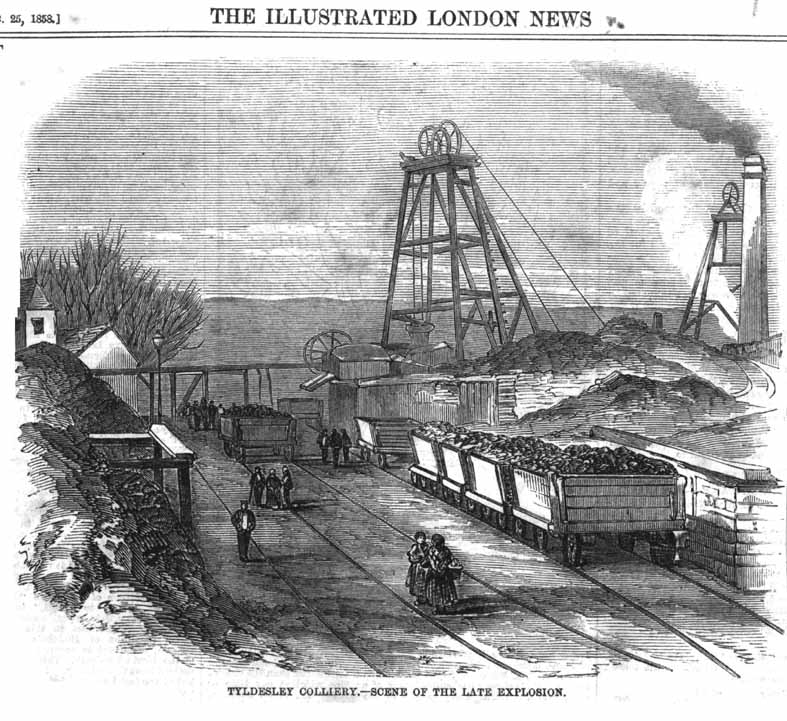Yew Tree Colliery was a coal mine operating on the Manchester CoalfieldPart of the Lancashire Coalfield. Some easily accessible seams were worked on a small scale from the Middle Ages, and extensively from the beginning of the Industrial Revolution until the last quarter of the 20th century. after 1845 in TyldesleyFormer industrial town in the Metropolitan Borough of Wigan, in Greater Manchester., which was then in the historic county of Lancashire.
In 1835 George Green of Wharton Hall, Little Hulton and his brother William leased land at Yew Tree Farm, north of Manchester Road, to prospect for coal at what became Yew Tree Colliery. The colliery’s take stretched for 1000 yards in an east-westerly direction and 600 yards in a north-south line. The first coal was not raised until 1845.[1] John Holland, a railway contractor from Ireland, joined Green and they formed the Tyldesley Coal CompanyCoal company was formed in 1870 in Tyldesley on the Manchester Coalfield, in the historic county of Lancashire, England. in 1870.[2][3]
By 1858 the shaft was 250 feet (76 m) feet deep, and the workings extended under the parish church
Waterloo church dedicated to St George, completed in 1825 to serve the growing township of Tyldesley cum Shakerley..[4] The colliery had two shafts, one for ventilation was sunk to the Rams mine at 600 feet (183 m). They were deepened in the early 1890s to access the Black and White mine.[5] When Cleworth Hall was developed, Yew Tree Colliery was abandoned and was shown as discontinued in the 1914 Mines Lists.[6]
Tramroad
In 1851 George Green and his partners signed a lease from the Ellesmere Trustees which allowed them to make a tramroadMineral railway that connected Yew Tree Colliery in Tyldesley to the Bridgewater Canal at Astley. from Yew Tree to the Bridgewater Canal east of Astley Green. At the Tyldesley end, the tramway was worked by cable down the steep slope of the Tyldesley Banks and horse-drawn wagons completed the journey.[1][7] The line was standard gauge by 1868 and locomotive haulage took over.[7] In May 1912 the Earl of Ellesmere asked £250 per annum to renew the lease but the following year it was decided to move coal by rail and the lease was not renewed.[1][7]
North of Manchester Road the tramway continued past Yew Tree No 1 shaft and across Common Lane on the level to a shaft on Shakerley Common from where coal was moved along the tramroad until the 1860s. A line to the east from Yew Tree was made when Cleworth Hall Colliery was sunk.[1][7]
Disaster
On 11 December 1858 an explosion of firedampDamps is a collective name given to all gases other than air found in coal mines in Great Britain. The chief pollutants are carbon dioxide and methane, known as blackdamp and firedamp respectively. , probably ignited by a safety lamp, cost the lives of twenty-five men and boys, the worst mining disasterMining disasters in Lancashire in which five or more people were killed occurred most frequently in the 1850s, 1860s and 1870s. to occur in Tyldesley.[4][8]

